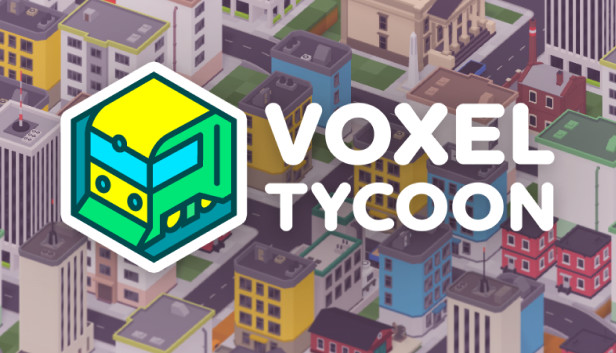This gives simple examples of block and pre-signals and some tips on how to use them.
Introduction
As long as this isn’t the case I hope these examples help you to get a better understanding of the logic behind these signals. If you don’t want to read the full thing just follow these two simples rules and most of your signaling problems should be gone:
– Always use pre-signals before crossings.
– Always use normal signals at the exits after any crossing.
(in some cases these rules won’t work and this guide will show one example!)
Station entries
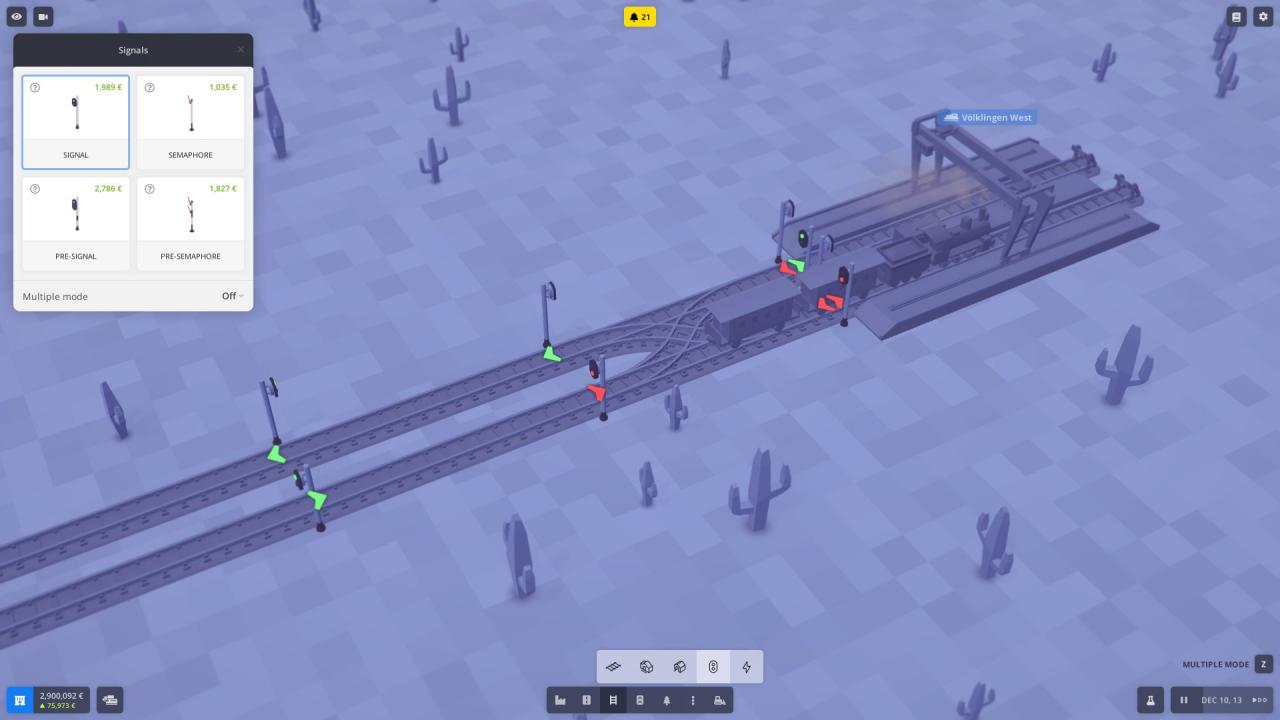
Here 2 trains are in the station and the first signal is still green. That is because the block (indicated with the red rectangle) in front of the station is free. The green arrow in front of the signal also tells us that.
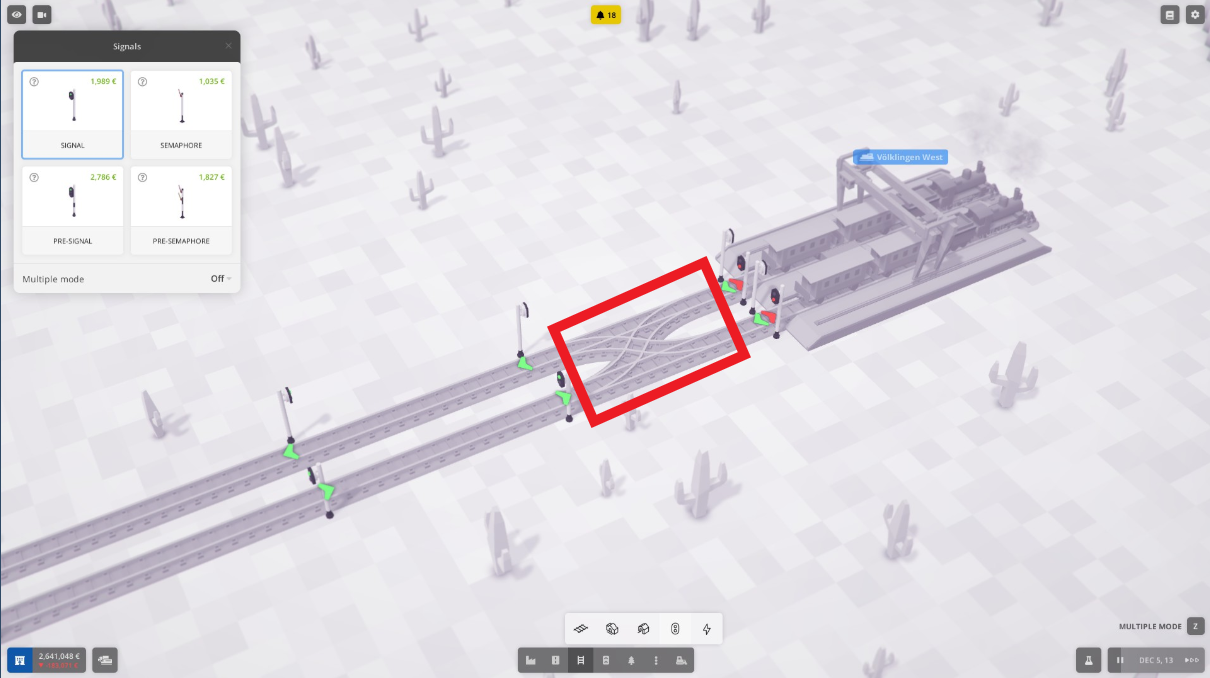
However, if a third train arrives it will enter the free block and just stop at one of the signals in front of the station:
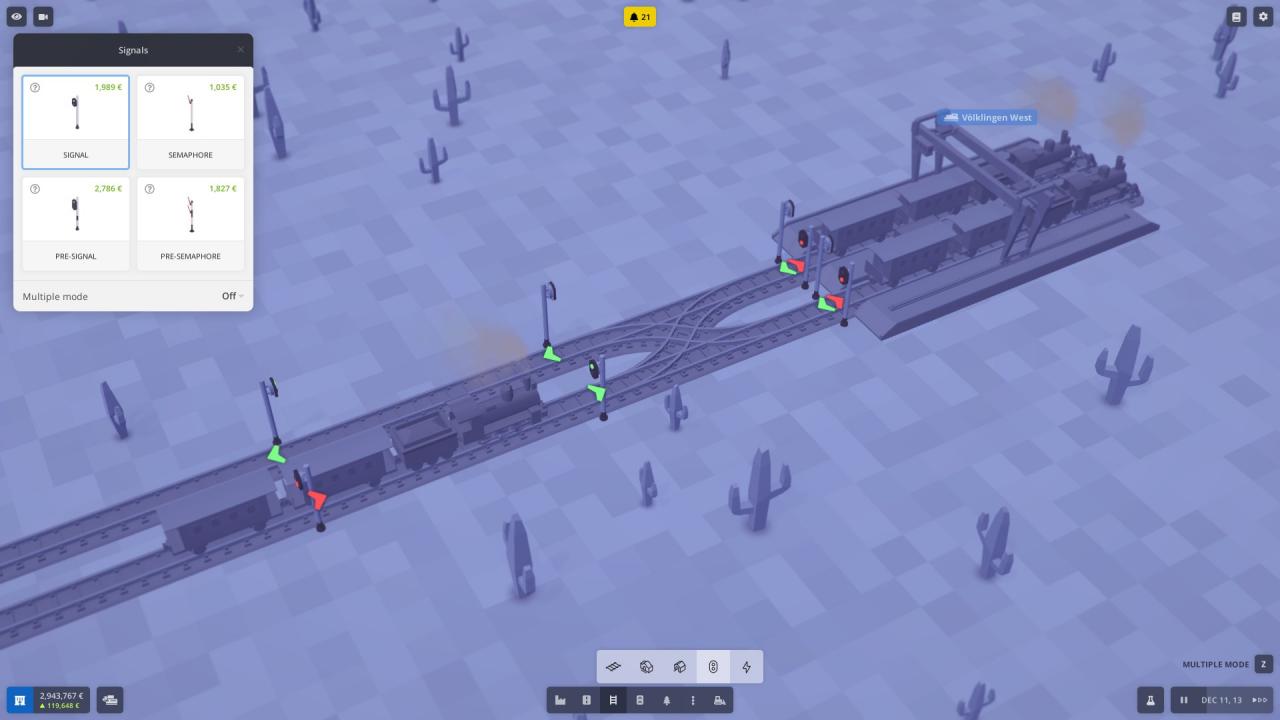
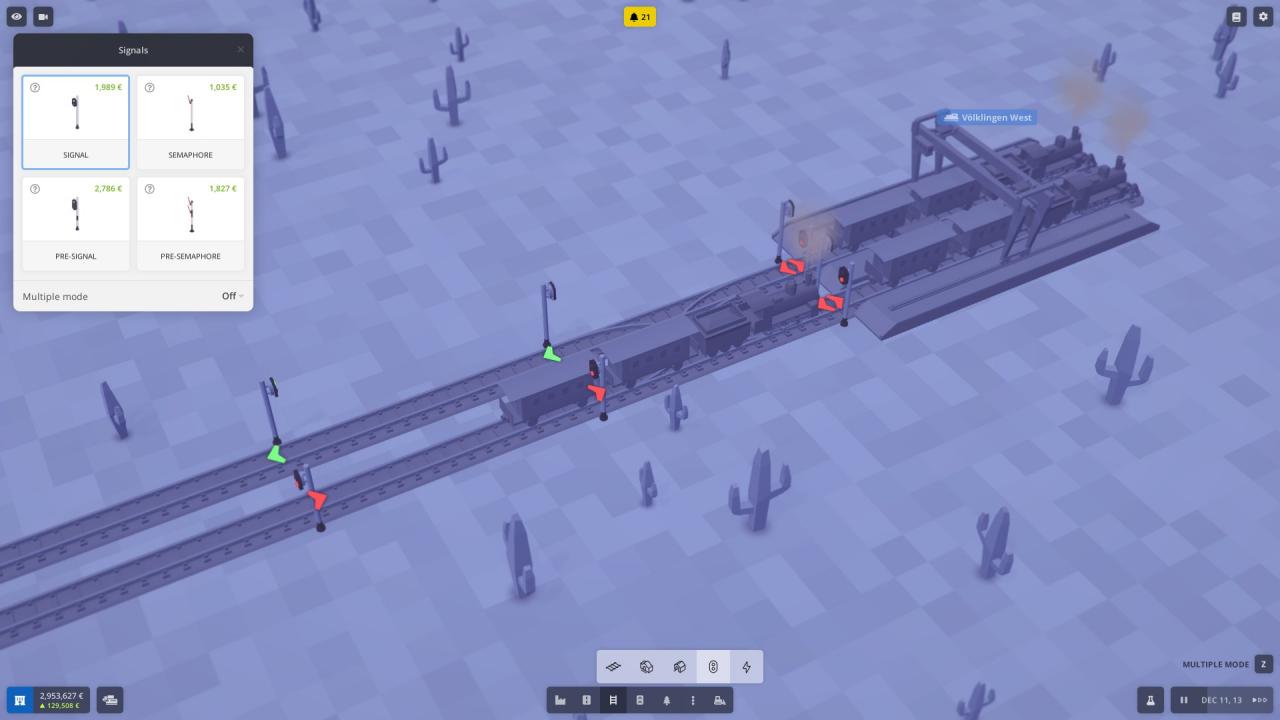
To solve this the pre-signals are needed. In this game they work like the normal signals with one addition: They will look at the next normal signals and only give a green light if at least one of the following signals is green (note here, that only the signals in front of the station count and both of their arrows are red. So the pre-signal doesn’t “look around the corner” to the signal at the exit of the block in front of the station). Even before the train arrives the arrow below the signal is red, so it won’t let the train enter the block in front of the station. The block remains free for the trains in the station to leave it. Let’s have a look:
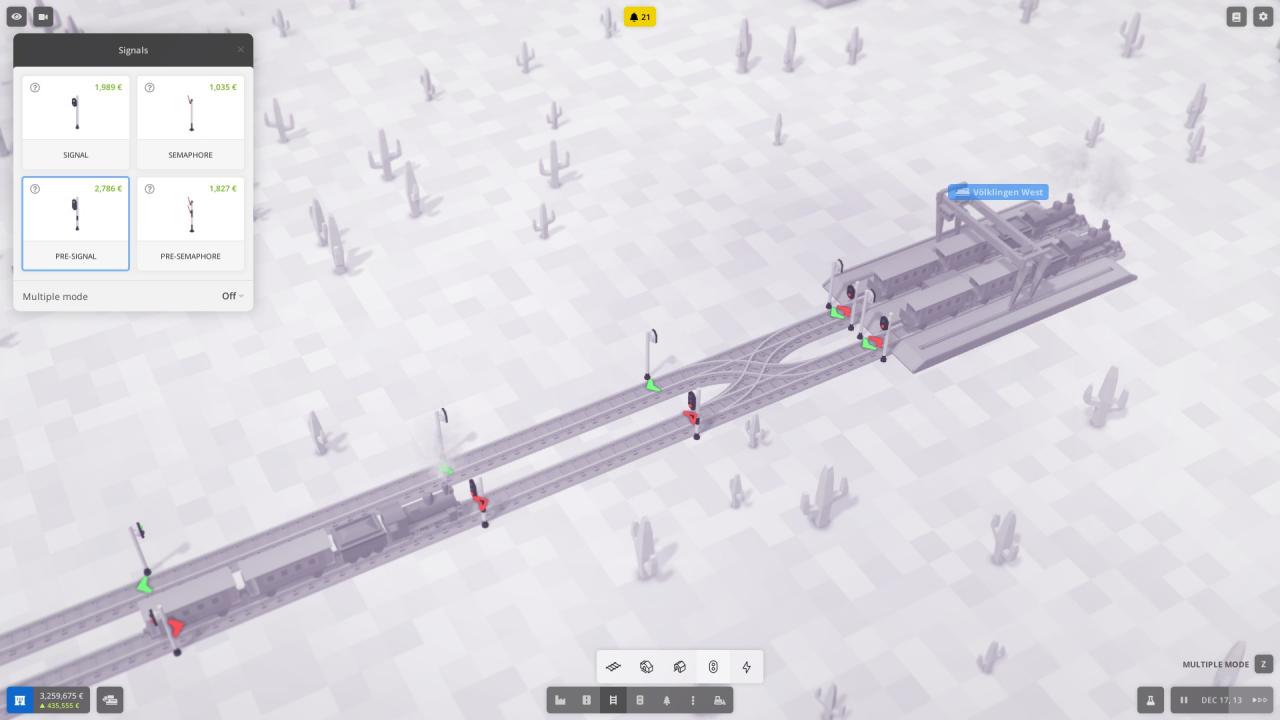
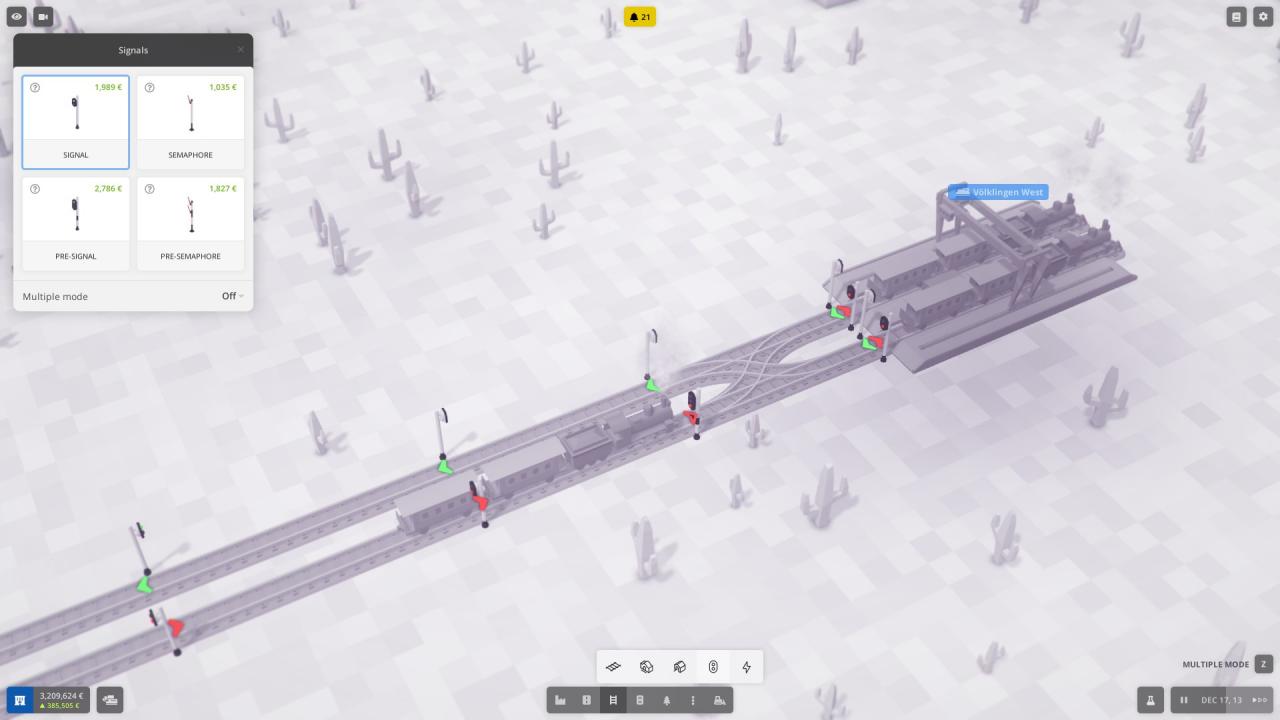
This easy 2 platform station with just one pre-signal will avoid blocking your station entries.
Crossings
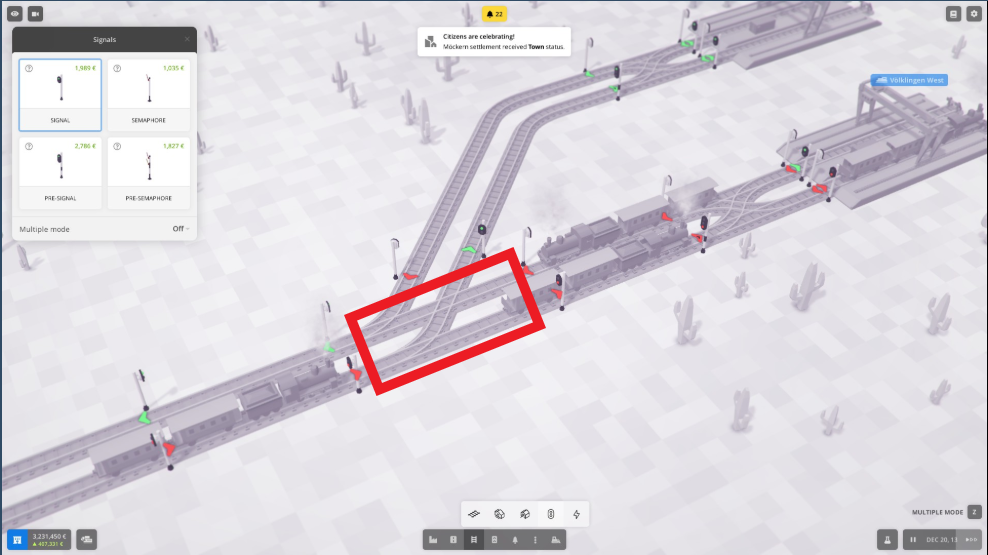
So to prevent this, we need to make sure no train can enter the block before it is 100 % sure that it can leave it, therefore making space for all the other trains. First the easy solution with pre-signals in front of the block and a repositioning of one signal to make sure no train stands inside the block. As you can see the arrow on the signal of the upper track is now green. (note here: One pre-signal is yellow. This is because at least one signal it is “looking at” is green and at least one is red. So depending on where the train wants to go, it will let it through). The train at the yellow signal wants to go to the occupied station, so it will wait and not enter the block. Traffic jam avoided.
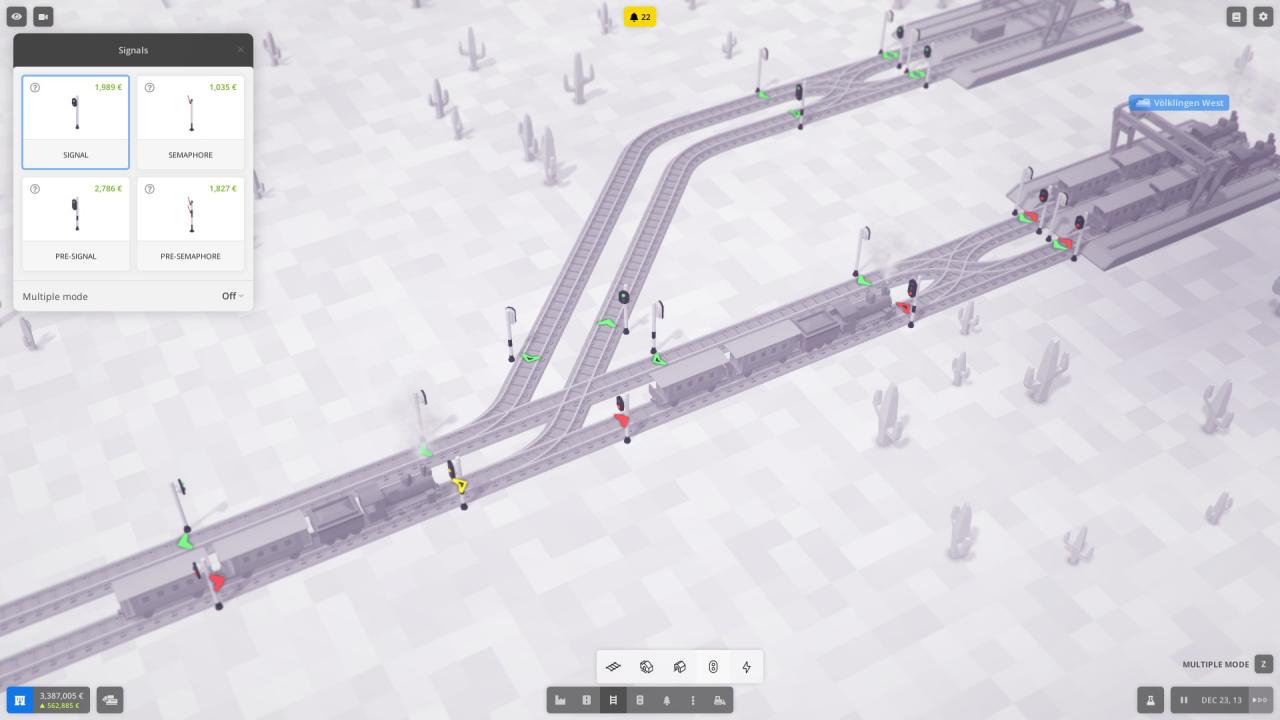
There is also another solution without moving signals. Remember the rules from the intro? Here they won’t solve it, because the train occupying the block would still be there if we don’t move the signal. So this is the solution with pre-signals. Here multiple pre-signals are chained on the lower track. That means they keep “looking” for the next normal signal. If the station is occupied the next train will stop at the first pre-signal in front of the block!
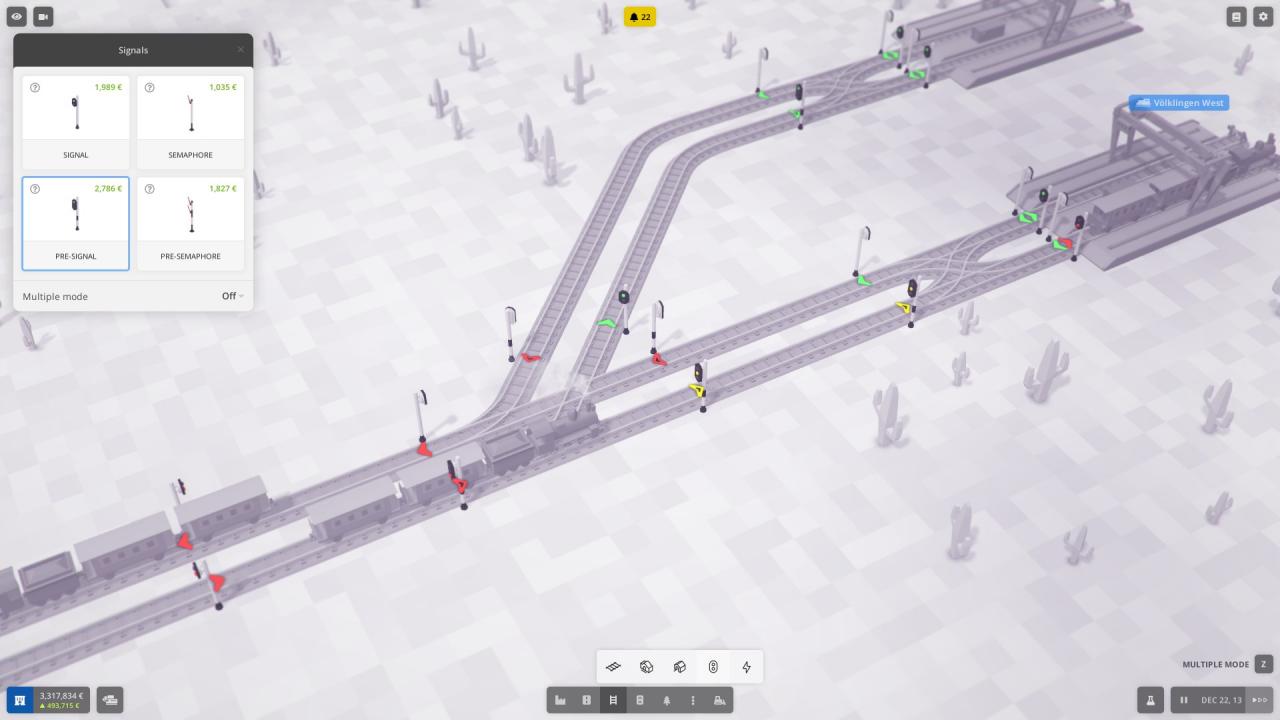
So some of you may find this annoying because only 1 train can pass the block at a time. How to get more throughput? We need more blocks. This works for station entries as well as crossings. For more blocks, we need more space to divide the tracks with more signals as shown below. In this example a train can leave the upper track while another train can enter the lower track of the station. It is not pretty but effective.
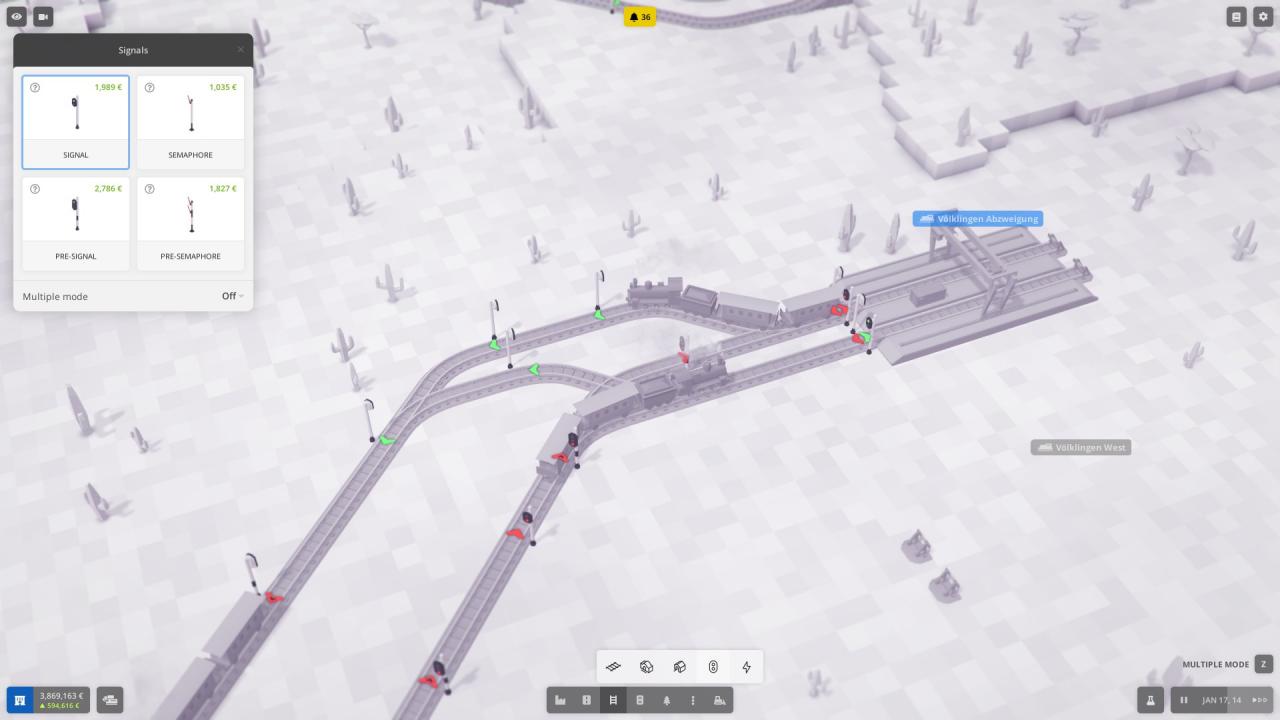
Experiment with this and you will find more solutions and even better setups for your crossings and station entries!

